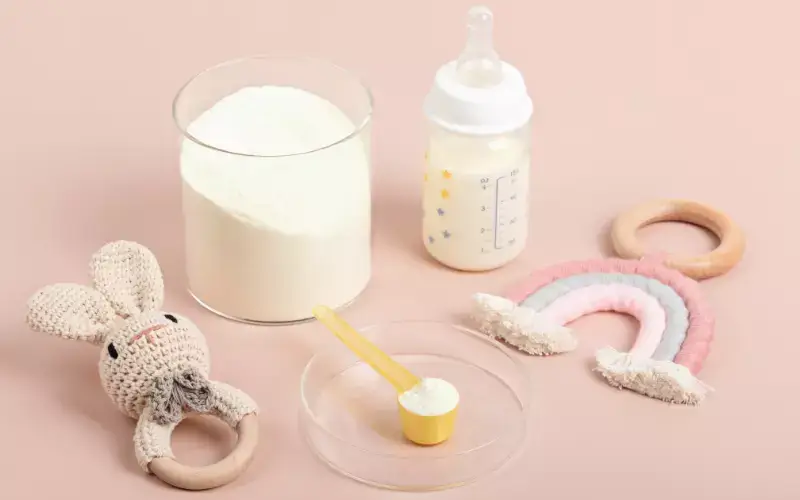
Breastfeeding withdrawal: how to do it?
Going back to work soon and thinking about weaning your baby? To be successful, this important step in the mother/child relationship must be well prepared. Breastfeeding withdrawal can be difficult for both the newborn and the mother. Our tips for a smooth transition.

What is breastfeeding withdrawal?

Weaning is stopping your child from breast-feeding. It is said to be induced if it results from the choice of the mother, most often as part of the return to work. It is said to be natural if it is the toddler who, by himself, turns away from feeding. Breast milk weaning can occur at very different ages, there are no rules. When a baby is only a few weeks old, its main aim is to replace it with infant milk. When the child is several months old, it becomes part of the process of progressive introduction of food. There are many reasons for the decision to stop breastfeeding. In any case, it is important to prepare this transition well so that it happens smoothly. The winning third for a successful withdrawal? Know how to listen to your body, be attentive to the signals sent by your child and not (too) ask yourself any questions.
Sweetness for baby weaning
Breastfeeding withdrawal is anticipated. To ensure that mom and baby have a safe time, it is best to go step by step. Except in special circumstances, sudden stopping must be avoided. Indeed, your child would not understand and risk rejecting the bottle. The transition from breast to bottle is linked to the resumption of your professional activity? So, a few weeks before the end date of the maternity leave, start by removing a feeder, then a second. Prefer mid-morning and afternoon. Indeed, morning and evening feedings are the most nutritious. In addition, you are generally more available for a moment of symbiosis in person. Gradually reducing the pace of breastfeeding helps to prevent the risk of breast engorgement. Is that the case? If you can, milk during the day and drink a little less water.
To wean your baby gently, it is essential to explain why you stop breastfeeding, regardless of age. He needs to be reassured and cuddled. Just because you don’t breastfeed him anymore doesn’t mean you have to hold him less. The transition will be easier if you continue to give her fusion moments.

Breastfeeding withdrawal difficult? A few tips
Offer the bottle several times a day, always in a soothing way. For successful breastfeeding withdrawal, be creative (and cunning):
- gelify your milk with a little agar-agar and give it to the teaspoon: a good way to turn it away from your breast;
- soak the tip of the teat in breast milk and present it to your baby to tame this new object;
- Place a DAL (lactation aid device) attached to a bottle against your finger: baby will suck your finger while sucking milk.
There are many ways to overcome the challenges of breastfeeding withdrawal.
Dead end? A lactation consultant can help you get there.

